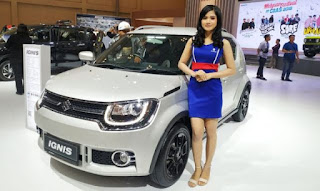Daihatsu Sirion Evolution, From First To The Last Generation
Of course there are many differences between the third generation Daihatsu Sirion and its two predecessors. For those who are curious, we discuss a little of the Daihatsu Sirion each generation.
Two generations of Sirion / Myvi use a similar design. Five-passenger city car exterior design, minimal corners or many round sections. Both of them can still be found on the streets of Indonesia. Not even a few gathered in a special community for Sirion users.
Daihatsu Sirion 1st Gen
Two years later since its birth in Malaysia, the first generation Daihatsu Sirion made its debut in 2007 in Indonesia. Unlike the Malaysian market which has two engine options, Daihatsu only offers one engine for Indonesia. K3-VE is the 1.3 liter engine code carried by Daihatsu Sirion in Indonesia. The engine is powered by dual variable valve technology (VVT-i) and produces 87 PS of power at 6,000 rpm and 116 Nm of torque at 4,400 rpm. The output lines are available with 5-speed manual and 4-speed automatic transmissions.
When sliding, the first generation Daihatsu Sirion only has one M variant with a differentiating transmission. Whether additional equipment and accessories such as body kits are sold separately. The features are pretty standard for that year. The audio head unit can play CDs, 4 speakers, power windows and there are five color options on offer. During the 2007 launch, the price of the Daihatsu Sirion M MT was IDR 132 million and IDR 142 million for the AT.
Daihatsu Sirion 2st Gen
The second generation Daihatsu Sirion was born in mid-2011, to be precise at the Indonesia International Motor Show (IIMS). As in the first generation, the Daihatsu Sirion is also imported directly from Malaysia. In appearance, it is still similar to its predecessor. But parts of the face have changed, including the grille, bumpers, headlights and hood. You could say the second generation of the Daihatsu Sirion is more modern.
Despite changes and updates in a number of sectors, the second generation Daihatsu Sirion still uses the 1.3 liter VVT-i K3-VE engine. It's 90 PS and 117 Nm of torque. The transmission options are still the same, 5-speed manual and 4-speed automatic. In the second generation of Daihatsu Sirion's prestige increased. Until now, this car is still often found on Indonesian roads. Not a few also make it the base of the slalom racing car.
Daihatsu Sirion 2st Gen Facelift
In 2015, the second generation Daihatsu Sirion got a facelift with a focus on changing its face. The bumper and grille are sweetened and there are additional LED position lights. Also new alloy rims, rear spoiler and muffler cutters. The mirror part can also be folded automatically.
Inside the cabin is a new 2DIN audio head unit with support for CD, MP3, AUX, USB and Bluetooth. The design of the steering wheel and instrument cluster was slightly revised. Audio controls on the steering bar are also provided to support driver comfort.
From the second generation of the Daihatsu Sirion facelift, also ADM, then released the Sport version. Although only the addition of the aero kit to the body, which boosts the appearance of the Daihatsu Sirion while adding to the selling value. The Sport variant is only available in white.
Well, the second generation Daihatsu Sirion and the facelift version, the latter being marketed by ADM. While a new generation will be launched soon.
The Reason That Daihatsu Sirion Is Still Imported
The third generation Daihatsu Sirion is officially present in the Indonesian automotive market. This flagship urban car, PT Astra Daihatsu Motor (ADM), is still equipped with direct import status, aka CBU from Malaysia.
The decision to continue bringing in Sirion from Malaysia is because the city car segment in Indonesia is relatively small. With a market of only 3,000 units per month, it is packed with around 11 citycar models.
Maybe if you make a car at a competitive price to be marketed, Daihatsu needs volume. And maybe that will happen, maybe there will be local Daihatsu.
However, to carry out local production, the market volume or sales must be seen. With sales of only 3,000 units (city car), and 200 units for the Daihatsu Sirion, it will be inefficient.
With that figure, Daihatsu has yet to see economies of scale. So, until today Daihatsu has not been able to make it in Indonesia because the economies of scale have not yet reached the expected level.
So, the decision to bring the Daihatsu Sirion CBU from Malaysia is still a better and more efficient choice, rather than having to produce locally. So, it would be better if for example we were CBU from Malaysia, which incidentally is a group from Daihatsu itself.




Comments
Post a Comment